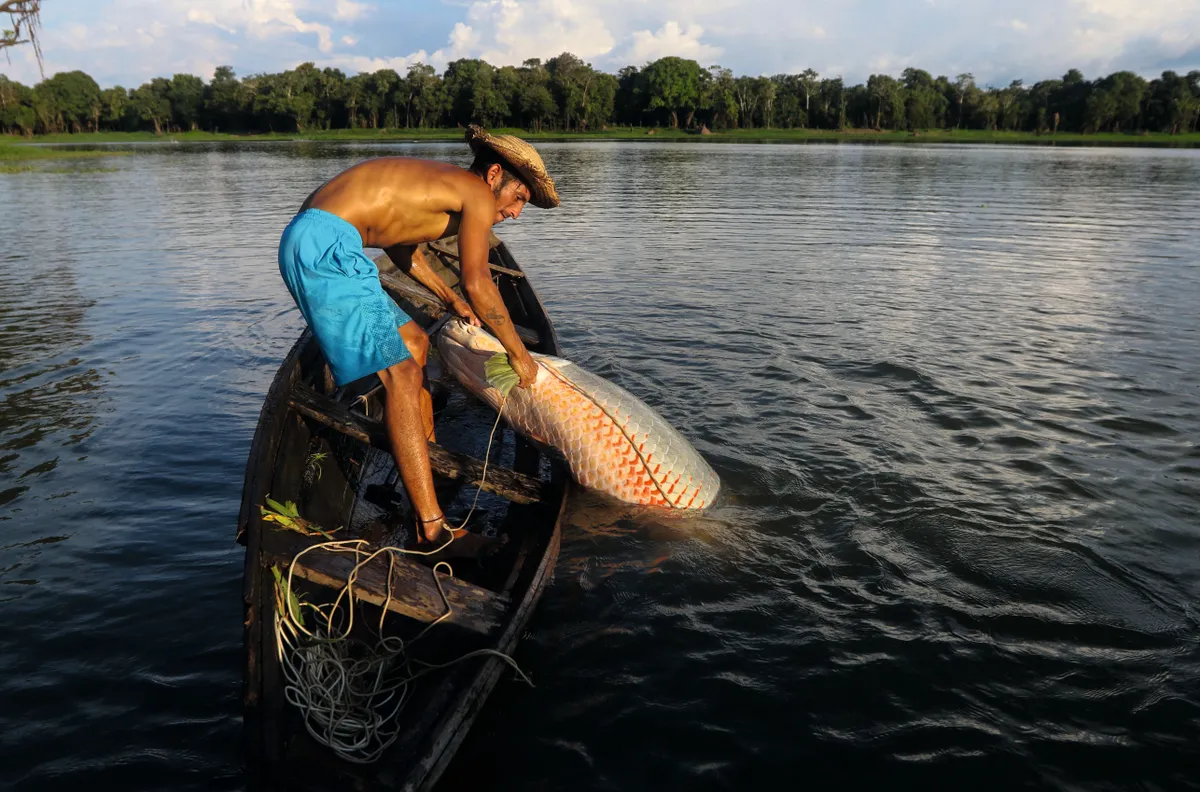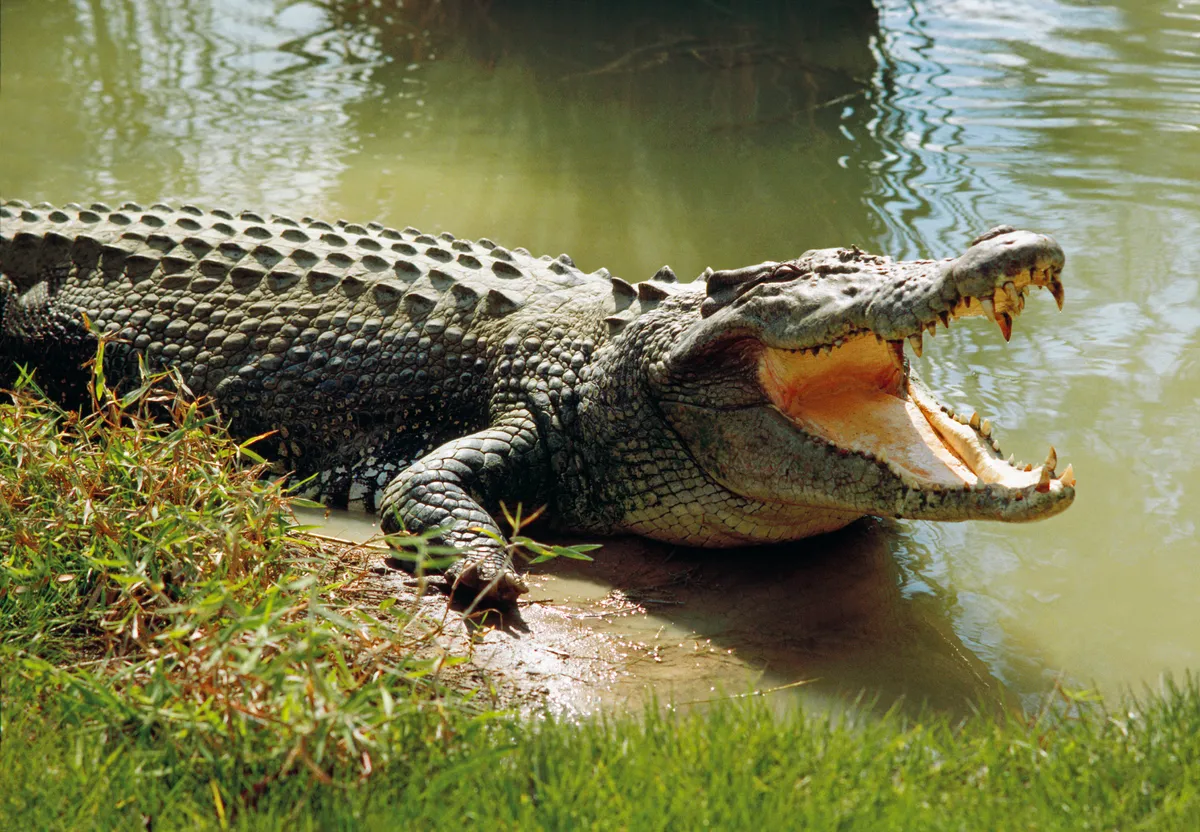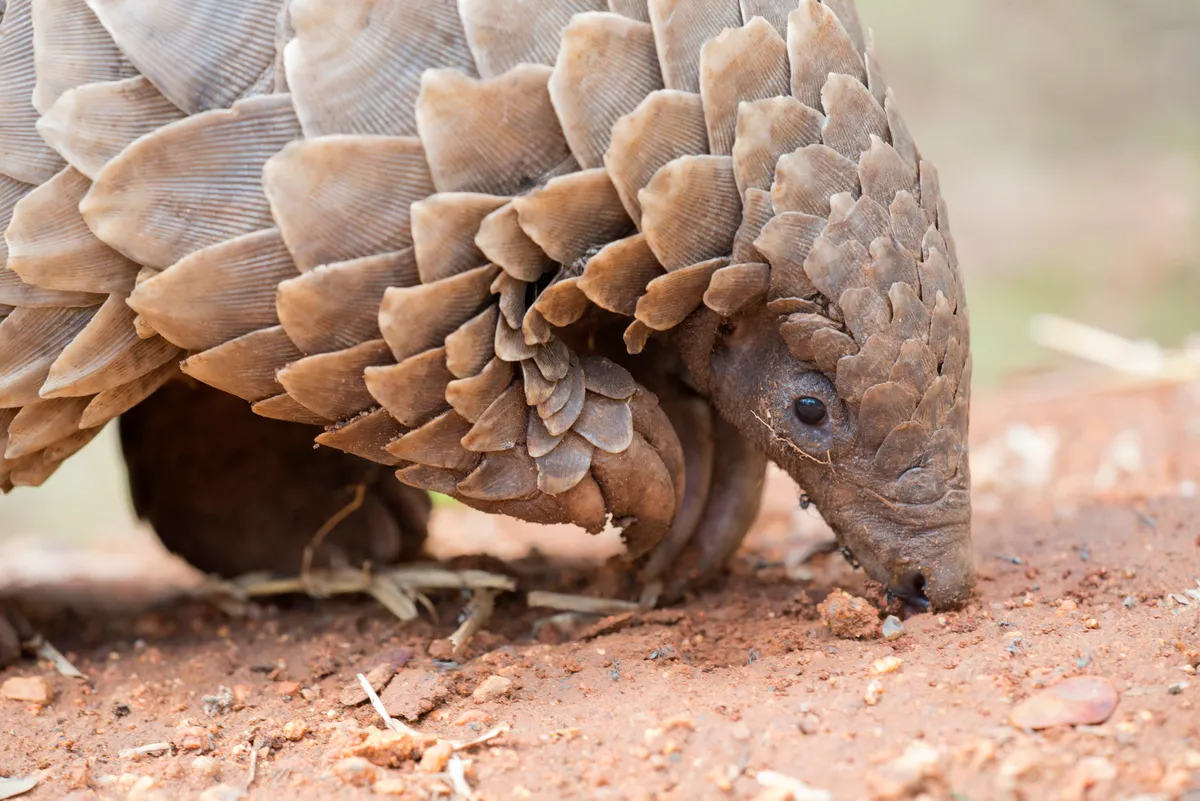The chances are you don’t consider yourself a consumer of wildlife products. You might forage a few autumn fruits and fungi, but you’re not part of an annual legal trading market worth a staggering $220 billion (£182 billion) a year – or, indeed, complicit in the illegal one, estimated at anywhere between £6-19 billon.
The chances are you’re wrong about that. Bought any fish recently? Or anything made of wood? They are both wildlife products.
Alternatively, open up your food cupboard – what do you see? Have you got any marshmallows or soft drinks? They probably contain gum arabic, the hardened sap of an acacia tree that grows in semi-desert areas of North Africa, the Arabian Peninsula and the Indian subcontinent.
Most of the world’s gum arabic comes from Sudan, where it is a major economic activity for more than 10 per cent of the population. The substance is also used in pharmaceuticals, paint, glass manufacturing, textiles, and the weapons and fireworks industries.
There are plenty of other common products harvested from wild plants. Brazil nuts, ginseng and liquorice are all obtained from the wild, as are lesser-known products such as jatamansi, a plant rhizome harvested in Nepal.
Anastasiya Timoshyna, from the wildlife trade monitoring group TRAFFIC, says the public debate over how humans use wild species and whether it is good for their long-term conservation is rarely depicted in its full complexity.
“There are a lot of very black-and-white discussions in the media about it, and it’s because people see big headlines and a lot of conversations about the illegal wildlife trade and wildlife crime and how they affect both species and people negatively,” she says. “The reality is that most trade in wild species is a) legal and b) likely to be sustainable.”
That said, she concedes there are often question marks around sustainability, and clearly that is a particular issue for fisheries.
Can the trade in wild animals be beneficial to conservation?
But – for argument’s sake – taking timber, other plants and fisheries out of the equation, what about wild animals? This is more clear-cut: the demand for products such as rhino horn and elephant ivory, made into bogus health products and unnecessary trinkets, is responsible for the unsustainable and brutal killing of some of the world’s most charismatic mammals. The exploitation of wild animals is always wrong, surely.
Well, no. Just because something is a luxury, doesn’t make it wrong. Or unsustainable. Vicuñas – South American relatives of camels and the species from which alpacas were domesticated – are shorn every year in Bolivia and Peru for their extraordinarily fine wool, which is used to make scarves, stoles and other clothing. These can be eye-wateringly expensive.
A pure vicuña stole from Johnstons of Elgin, for example, will set you back the best part of £4,000. Think what you like about that, but here’s the thing: in the early 1960s, the global vicuña population had crashed from an estimated pre-colonial population of two million to just 10,000 and the species was on the brink of extinction. That numbers are now back to around 500,000 is on the back of controlled trade in its wool that allows local communities to share in the benefits.
Dilys Roe of the International Institute for Environment and Development and an expert in the sustainable wildlife trade, says the vicuña has gone from Critically Endangered to Least Concern on the IUCN Red List.
“It’s as a result of people having the incentive to conserve them,” she says. Last year, Roe wrote up a series of case studies for the Convention on International Trade in Endangered Species (CITES, which regulates much of the legal trade in wildlife). “They’ve got a really nice phrase that is ‘a vicuña sheared is a vicuña saved’. It’s very clear that that has been what’s brought about the change in the fortune of that species.”
Gabriela Lichtenstein, who has closely studied how local communities manage the vicuña trade, says it is “usually considered a ‘success story’ in the ‘conservation world’ at international forums”, but that it’s far from perfect. Local people only gain moderately from selling the wool and conservation threats from captive breeding and vicuña-alpaca hybridisation projects persist.
Demand for a similar product that hails from the windswept plateau of Tibet nearly brought about the extinction of a species that lives there. Shahtoosh shawls, made from the Tibetan antelope’s fur, sell for as much as $20,000, but uncontrolled poaching in the 1980s and 90s led to a 90 per cent crash in its population. Thanks to rigorous protection since the late 1990s, numbers have risen again. Unlike vicuñas, Tibetan antelopes can’t be caught so the wool can only be obtained if they are killed. Trade in one wool can be the saviour of a species; trade in another can lead to near-extinction.

Arapaima, giant freshwater fish endemic to the Amazon basin, have also been saved by community-managed trade. “In the late 1990s, it was close to extinction, but in the early 2000s, they changed the approach to have community-managed fisheries and they allowed them to sell the fish for luxury leather products – cowboy boots and wallets and things like that,” says Roe.
According to CITES, in the mid-1990s the Brazilian government initially banned all trade and exploitation of the arapaima, but “it proved impossible for government agencies with limited capacity to enforce these restrictions over vast areas”.
So it handed responsibility for the trade to local people. The idea was that it gives them a stake in maintaining populations so that there is always a sufficient stock of fish for them to take. It requires them to set up guard posts at the entrances to lakes where the fish are found and do annual counts.
And it works. It provides additional income for families in poor rural areas, and it’s also been a conservation success. At the place where the approach was pioneered, the population increased nine-fold in eight years, and across the 33 additional areas that are authorised to catch and trade in the arapaima, populations are up 200 per cent.
“Conserving this top predator has knock-on impacts for the health of river ecosystems generally, and has led to increases in biodiversity, including other species of fish that are also used by local communities,” says CITES.
Some other examples of sustainable wildlife trade involve species such as freshwater turtles in Peru. Here, local people are permitted to collect the turtles’ eggs, which they then allow to hatch. Some hatchlings are released to boost wild populations, and some are sold into the pet trade. In one Peruvian reserve, nest counts rose five-fold in a five-year period after the introduction of this programme.
Farming species in this way works particularly well for reptiles. In the wild, very few of the eggs would survive, so hatching them in captivity and then releasing some and selling some can be of huge conservation benefit. A similar programme is carried out with Nile crocodiles in Kenya, where the animals are grown for their skins, which are made into handbags and other fashion items.

Here, perhaps, is where the pros and cons of the wildlife trade become more nuanced. There is a huge saltwater crocodile captive-breeding industry in Australia, worth an estimated US$75 million in the state of Northern Territory alone. In the mid 20th century, uncontrolled hunting left Australia’s crocodiles severely depleted, and they were given full protection, on a state-by-state basis, in the 1960s and 70s.
In Northern Territory, a sustainable-use programme was established in 1983. From the beginning, local communities were heavily involved in collecting and incubating eggs, farming the crocodiles and processing them for their skins and meat. In the intervening years, wild crocodile abundance has nearly doubled, and large wetland areas are valued by landowners because of the eggs that can be harvested from them.
But is it ethical to kill crocodiles for fashion items? The RSPCA certainly thinks that it’s cruel to keep them in captivity. Crocodiles can be aggressive towards each other, resulting in injuries, it says, and they can experience pain, stress, fear and anxiety. In short – they’re wild animals and they shouldn’t be in captivity, particularly not for the production of luxury goods.
According to CITES, lobbying by animal rights’ activists is already making the fashion industry think twice about using their skins. “Such moves would undermine Aboriginal livelihoods and social tolerance for large saltwater crocodile populations,” it warns.
It’s clear that some species can be successfully sustainably used and some can’t – but it can be hard to judge which are which. A report published by the International Trade Centre in 2015 attempted to provide some ground rules.
There are many different factors involved. The biology of a species – how quickly it reproduces and how easy it is to catch, for example – is key, but so are other issues such as property rights, how the supply chain is structured and whether poorer, more marginalised communities are able to benefit from trade. The consumer-end market is also important.
We’ve already seen how the farming of crocodiles can be good for their conservation. In contrast, large parrots have very slow reproduction rates, so trading them can have hugely detrimental impacts on populations.

Pangolins, meanwhile, are slow and easy to catch, so highly vulnerable to overexploitation. In addition, “reliable population estimates are almost impossible to obtain given their secretive and nocturnal nature,” which means ensuring that any pangolin hunting was sustainable would be almost impossible.
The bottom line is that wherever trade in wildlife takes place, local people must benefit. “Biodiversity is declining rapidly across the world, but it is declining less rapidly in areas where it is owned and managed by indigenous people and local communities,” says Dilys Roe. “You have to involve local people in conservation, not just for moral reasons, but because they are very effective at it.”
Anastasiya Timoshyna says TRAFFIC wants people to celebrate when they buy products with wildlife extracts such as gum arabic, ginseng or shea butter, made from the seed of the shea tree and used in cosmetics and some foods. It wants them to be more aware of what’s sustainable and what isn’t, and where they don’t know or it isn’t clear, to ask the manufacturer.
“What we don’t want is for people to say, ‘Why does this contain wildlife, this is awful’,” she says. “Trade that is sustainable benefits everything.”
Top image: Residents of the southeastern highlands of Peru participate in a traditional "Chaccu" feast --the roundup and shearing of vicunas for their wool-- in Pampa Galeras, 450 km of Lima. © Getty Images)
